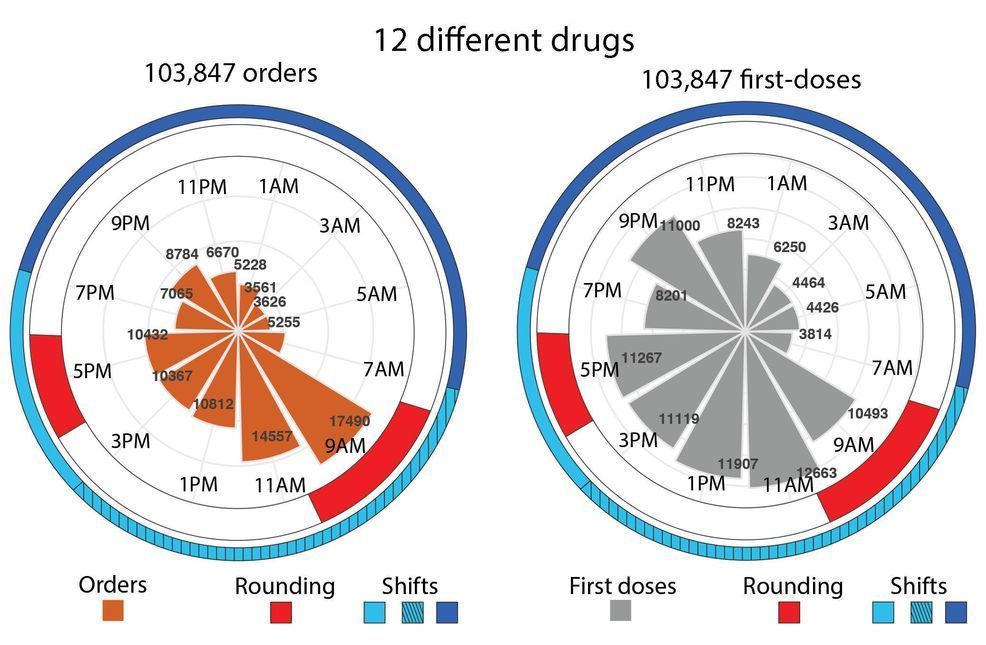Oct 3, 2019
Room for improvement in drug dosage timing in hospitals
Posted by Paul Battista in category: biotech/medical
Too many hospitals provide medications according to the practicalities of their staffing schedules rather than the ideal dosing times for their patients, according to a new study led by experts at Cincinnati Children’s.
The study, published Oct. 1, 2019, in PNAS, was led by David Smith, MD, Ph.D., Divisions of Pediatric Otolaryngology and Pulmonary Medicine; Marc Ruben, Ph.D.; and John Hogenesch, Ph.D., Co-Director, Center for Circadian Medicine at Cincinnati Children’s.
The study examined the daily distribution of approximately 500,000 doses of 12 drugs in 1,486 inpatients at a major U.S. children’s hospital.


















